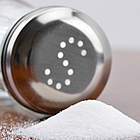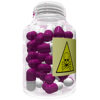After years of doctors exhorting their patients to eat less salt, the rules have changed. A panel convened by the CDC (Centers for Disease Control) determined that we can salt our food again. The US Dietary Guidelines had recommended limiting sodium intake to 1,500 – 2,300mg/day. The average American, in line with the rest of the world, actually takes in about 3,400mg/day.
While I’m delighted to salt my popcorn without the usual side of guilt, I was distressed to discover how the guidelines had been set. It seems that blood pressure begins to inch up when sodium levels rise above 2,300mg. The reasoning went — Sodium leads to higher blood pressure. Higher blood pressure leads to heart attacks. Therefore, lower the sodium and reduce the number of heart attacks. There wasn’t a specific study to confirm the hypothesis.
The new expert panel was commissioned by the Institute of Medicine at the request of the CDC. The panel focused only on studies published after 2005 and that they deemed rigorous. 2 studies in particular compared high versus low levels of sodium in otherwise similar groups. One tested 2,750mg/day versus 1,840m/day on people who had moderate to severe congestive heart failure. They found 3x as many hospital re-admissions in the lower salt group along with 2x as many deaths. The other study found risk of heart attack, stroke, congestive heart failure and death from heart disease increased in two groups — those ingesting more than 7,000mg/day and those getting less than 3,000mg/day.
These 2 studies lead to the conclusion that low sodium intake is as dangerous as eating 2x the world’s average amount.
In a recent New York Times article, Dr. Michael H. Alderman, a dietary sodium expert at Albert Einstein College of Medicine who was not a member of the committee, noted some physiological negatives of too little salt: triglyceride levels increase, insulin resistance increases, and the activity of the sympathetic nervous system increases. Each of these factors can increase the risk of heart disease.
It does seem that if the medical community is going to string together a series of facts to leap to a conclusion, then common sense might have been added to the mix. The worldwide average sodium consumption is and has been 3,400mg/day. That’s probably a good enough goal if we are going to set numeric guidelines without concrete evidence.
— Suzanne B. Robotti






